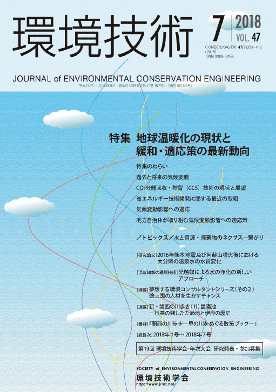
- Issue 7 Pages 386-
- Issue 6 Pages 327-
- Issue 5 Pages 265-
- Issue 4 Pages 206-
- Issue 3 Pages 154-
- |<
- <
- 1
- >
- >|
-
Kyohei YOKOTA2018 Volume 47 Issue 7 Pages 386-393
Published: November 20, 2018
Released on J-STAGE: December 01, 2018
JOURNAL FREE ACCESSThe objective of this study was to examine the impact on components in hot spring waters by the Kumamoto Earthquake and the Aso Mountain(Mt. Aso)Eruption in 2016. The hot spring waters were Nagayu Spa, Yufuin Spa, and Beppu Spa in Oita Prefecture. Nagayu Onsen is located near Kujyu Mountain(Mt. Kujyu)that it is proximate to Mt. Aso. In my research area, there were some earthquakes with an intensity of 4 on the Japanese scale of 1 to 7 when the Kumamoto Earthquake occurred. The research term was from 2013 to 2017. Immediately after the earthquake, in April, 2016, Al, Zn, and P showed lower concentrations compared to the mean ± standard deviation for 2013 to2017. Also, 2 days after the eruption, in October 9,2016, Sr and Mn showed lower concentrations and Al and B showed high concentrations than the annual fluctuation. As a reason for the concentration change after the earthquake, an elution from the sediment in the basement was considered. Regarding the concentration change after the eruption, it is estimated that the amount of the elution from the underground materials decreased. Because of this, it was presumed that the pressure underground decreased due to the influence of Mt. Aso Eruption. This reason is only my speculation because this is a general event in a physicochemical phenomenon and not a data-based consideration.
View full abstractDownload PDF (1115K)
- |<
- <
- 1
- >
- >|